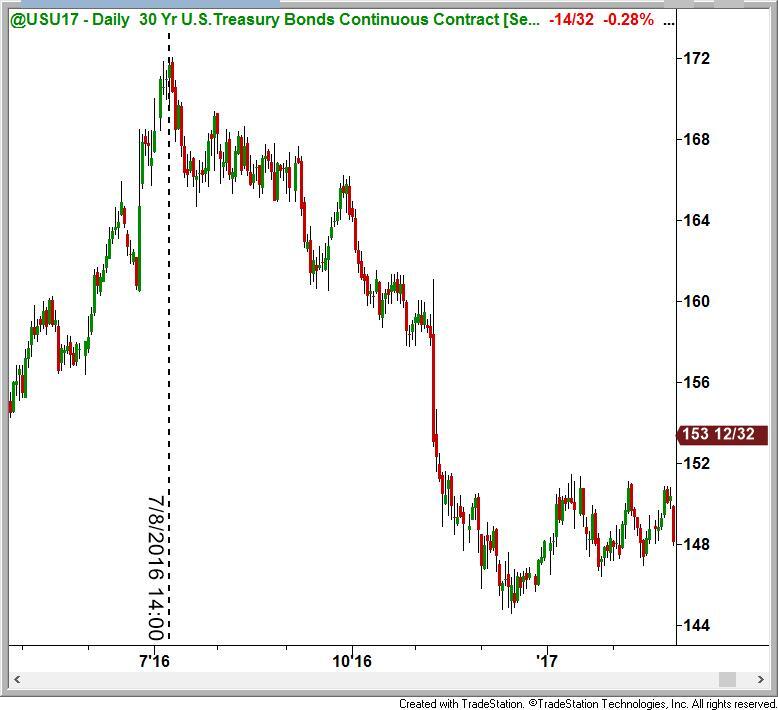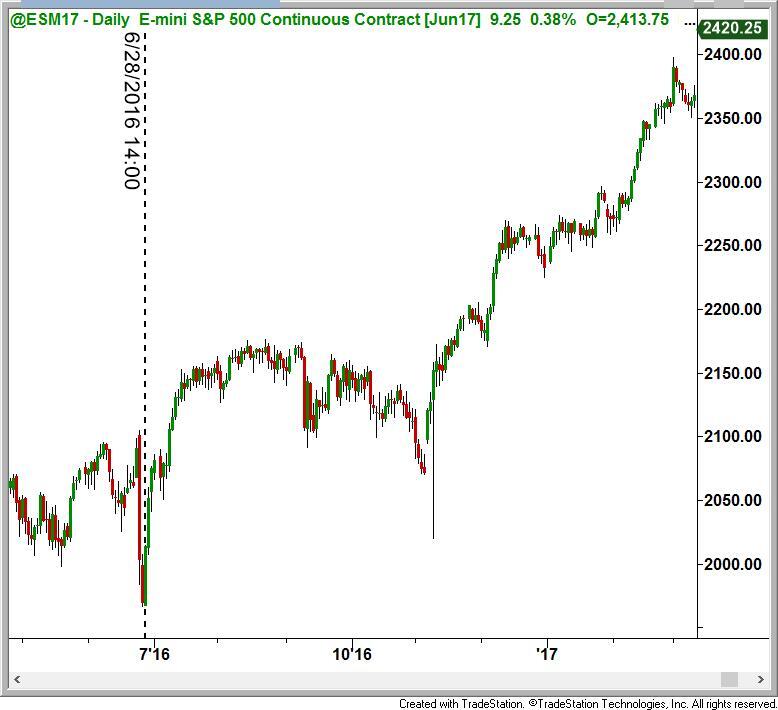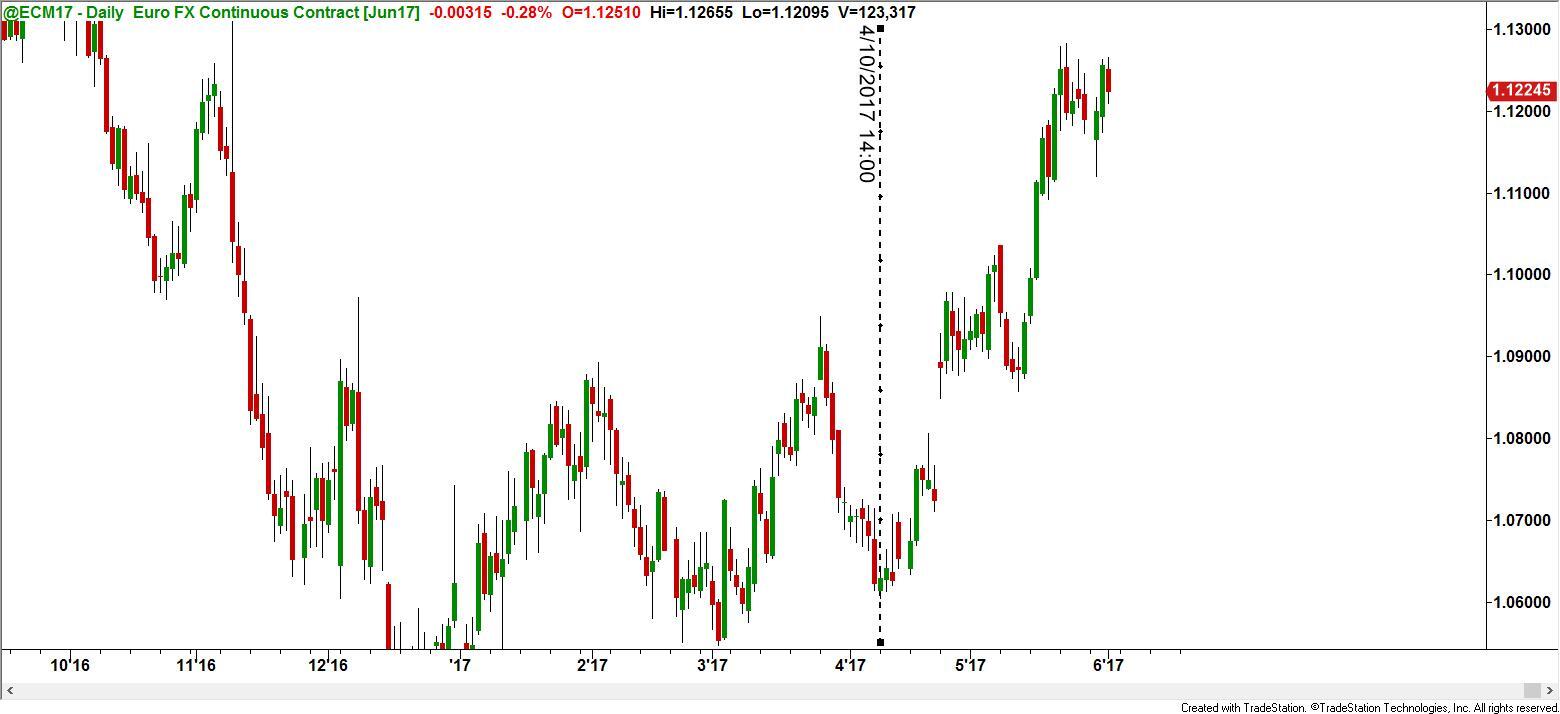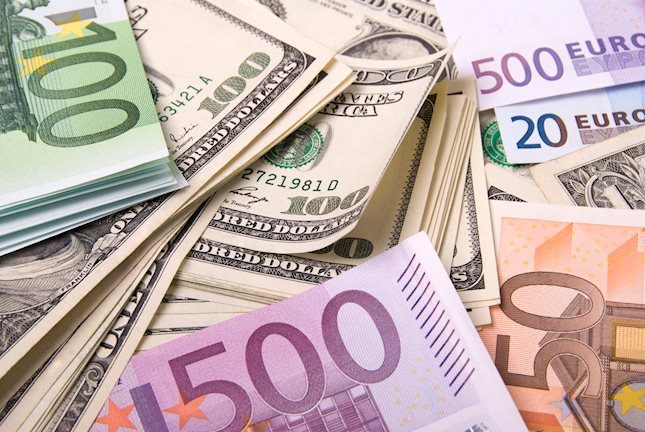Each day the global financial markets are impacted by events that cause traders to react in dramatic fashion. These responses quite often will have a ripple effect that can stretch across all types of markets and asset classes. In other words, what happens in one market will in turn move another related market. For newer traders, it’s important to understand this relationship. In this post, I’ll go over some of the strongest inverse market correlations and their uses to help traders gain an edge.
But before we get started, there is one major caveat about this topic: correlations usually hold, however, there are times when what seemed to be a strong correlation between two markets breaks and no longer works. This is often a temporary phenomenon as strong correlations always revert back. An astute trader must be attuned to these changes and be flexible enough to make the adjustments necessary to keep his edge.
The first inverse correlation we’ll go over is the one between stocks and bonds. For stocks, we’ll use the ES (S&P 500 mini) against the (US) 30-year treasury bond futures contract to do the analysis. This is a simple risk-on versus risk-off correlation. What is meant by this is that theoretically, stocks are inherently riskier than bonds and therefore when stocks are moving higher investors generally have a bigger appetite for risk and would sell the lower yielding bond market. This changes however, when things get rough in the stock market. Investors seek the safe harbor of treasuries, and in order to raise the cash necessary to purchase these fixed yielding instruments, they sell their stock holdings. The two annotated charts below illustrate these inverse correlations.
We can see that major inverse moves happened pretty regularly in these two asset classes. The key for traders is to find both markets entering opposing levels simultaneously, thus increasing the probabilities of timing the turning points. This correlation is important for traders who engage the markets on an intermediate-term time frame as it can be a major odds enhancer. Identifying the quality supply and demand levels is the most important element of this equation.
The other inverse correlation we’ll look at is that of the US Dollar index against the Euro Currency. This is a very strong inverse correlation because of how the Dollar Index is comprised, and the way the currency futures contracts are traded. First, the Dollar index is a basket of currencies traded against the US Dollar. The biggest component of this index is the Euro currency constituting over 57% of the index. In addition, currency futures are only the major global currencies (major industrialized countries) relative to the US dollar. In other words, they track the exchange rates of two currencies; because of this, the moves in the Euro currency greatly impacts the Dollar index. Similar to the Stock-Bond inverse correlation, we can see on the charts below that all the major moves happened on the same day.
For traders trying to gain an edge, learning how different markets impact one another is a must. Not knowing how the US Dollar can change the trajectory of commodities such as oil, copper or gold is a big disadvantage, especially when you’re competing with large banks and institutions who wouldn’t think of putting their traders on the front lines if they didn’t understand how the markets impact one another. If you want to have a chance to compete successfully you need to start thinking and acting like them; and one part of that is gaining an understanding of the interrelationships between markets. For the novice trader having a basic understanding of these two correlations is a good starting point.
Until next time, I hope everyone has a great week.
This content is intended to provide educational information only. This information should not be construed as individual or customized legal, tax, financial or investment services. As each individual's situation is unique, a qualified professional should be consulted before making legal, tax, financial and investment decisions. The educational information provided in this article does not comprise any course or a part of any course that may be used as an educational credit for any certification purpose and will not prepare any User to be accredited for any licenses in any industry and will not prepare any User to get a job. Reproduced by permission from OTAcademy.com click here for Terms of Use: https://www.otacademy.com/about/terms
Editors’ Picks

AUD/USD holds the bounce toward 0.6250 after China's Caixin Services PMI
AUD/USD sustains the rebound toward 0.6250 in the Asian session on Monday after China's Caixin Services PMI beat estimates with 52.2 in December. China's stimulus optimism and a subdued US Dollar offset increased bets for early RBA rate cuts, reviving the demand for the Aussie.

USD/JPY: Upside remains capped below 158.00 amid cautious mood
USD/JPY is consolidating the upside below 158.00 in Asian trading on Monday. The pair feels the heat from a cautious risk tone and a broadly subdued US Dollar but the divergent Fed-BoJ policy expectatations help keep it afloat in the Nonfarm Payrolls week.

Gold buyers stay hopeful whilst above 21-day SMA support
Gold price finds support and looks at $2,650 as the US Nonfarm Payrolls week begins. The US Dollar corrects further despite firm US Treasury bond yields and a cautious mood. Technically, daily indicators continue to paint a bullish picture for Gold price.

Bitcoin, Ethereum and Ripple show signs of bullish momentum
Bitcoin’s price is approaching its key psychological level of $100,000; a firm close above would signal the continuation of the ongoing rally. Ethereum price closes above its upper consolidation level of $3,522, suggesting bullish momentum. While Ripple price trades within a symmetrical triangle on Monday.

Week ahead – US NFP to test the markets, Eurozone CPI data also in focus
King Dollar flexes its muscles ahead of Friday’s NFP. Eurozone flash CPI numbers awaited as euro bleeds. Canada’s jobs data to impact bets of a January BoC cut. Australia’s CPI and Japan’s wages also on tap.
RECOMMENDED LESSONS
Making money in forex is easy if you know how the bankers trade!
Discover how to make money in forex is easy if you know how the bankers trade!
5 Forex News Events You Need To Know
In the fast moving world of currency markets, it is extremely important for new traders to know the list of important forex news...
Top 10 Chart Patterns Every Trader Should Know
Chart patterns are one of the most effective trading tools for a trader. They are pure price-action, and form on the basis of underlying buying and...
7 Ways to Avoid Forex Scams
The forex industry is recently seeing more and more scams. Here are 7 ways to avoid losing your money in such scams: Forex scams are becoming frequent. Michael Greenberg reports on luxurious expenses, including a submarine bought from the money taken from forex traders. Here’s another report of a forex fraud. So, how can we avoid falling in such forex scams?
What Are the 10 Fatal Mistakes Traders Make
Trading is exciting. Trading is hard. Trading is extremely hard. Some say that it takes more than 10,000 hours to master. Others believe that trading is the way to quick riches. They might be both wrong. What is important to know that no matter how experienced you are, mistakes will be part of the trading process.

Best Forex Brokers with Low Spreads
VERIFIED Low spreads are crucial for reducing trading costs. Explore top Forex brokers offering competitive spreads and high leverage. Compare options for EUR/USD, GBP/USD, USD/JPY, and Gold.





